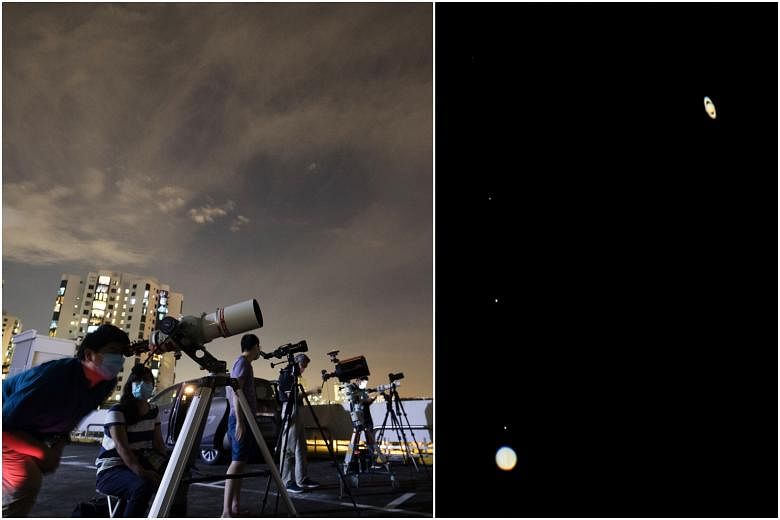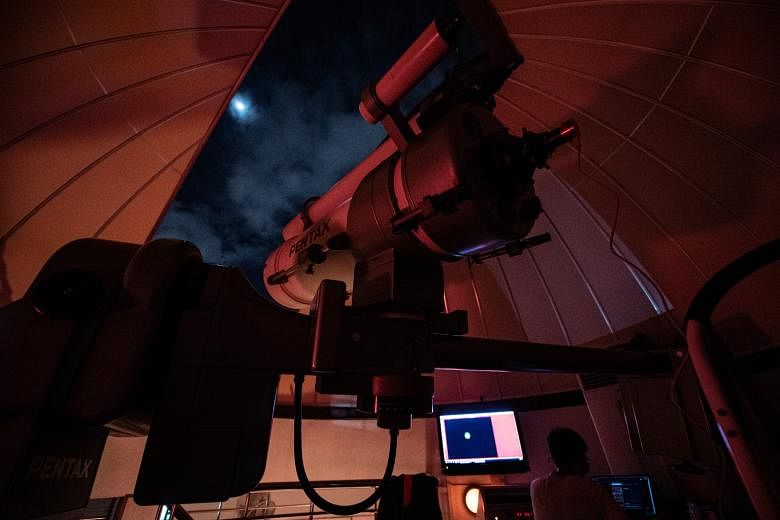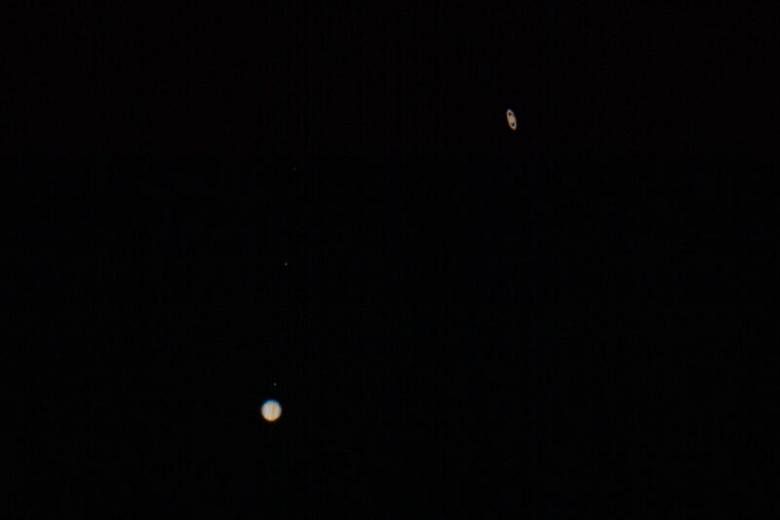SINGAPORE - Individuals and groups across the island looked to the skies on Monday (Dec 21) night to witness what appeared to be a single intense point of light, but was actually a kiss of two planets - Saturn and Jupiter, which came the closest they have been in centuries.
The event, also known as the Great Conjunction or Christmas Star, fell coincidentally on the winter solstice (Dec 21), the longest night of the year in the Northern Hemisphere.
The two planets have been inching closer to each other over the past few weeks.
According to the National University of Singapore, the last time they were this close, and visible, was in the pre-dawn sky on 4 March 1226, at the height of Genghis Khan's Mongol Empire.
But while they looked close enough to touch, the gas giants were actually over 730 million km apart.
The National Aeronautics and Space Administration (Nasa) said that the planets regularly appear to pass each other in the solar system, with the positions of Jupiter and Saturn being aligned in the sky about once every 20 years.
What makes this year's spectacle so rare, however, is that it has been nearly 400 years since the planets passed this close to each other in the sky, and nearly 800 years since the alignment of Saturn and Jupiter occurred at night, allowing nearly everyone around the world to witness it, Nasa noted.
Mr Mohamed Sajahan, 31, and his wife, school counsellor Thahira Thasnim, 27, gathered with friends in Ang Mo Kio to watch the celestial conjunction, after learning about the event from a friend, astronomy enthusiast A Kannan.
"Kannan told me that the conjunction was today, and that it could be seen in the Southwest sky. I thought it would be perfect to view it from my flat," said Mr Sajahan, a cybersecurity analyst.
Although the skies were cloudy and they were unable to spot the planets they were glad to enjoy the night and be part of the astronomical event.
In Woodlands, Mr Kannan, 56, a manager at a statutory board, had more luck.
"Despite the sky being overcast, Jupiter was still bright enough to be spotted though it was fainter than on clearer days," he said.
"The planets were visible for a full 45 minutes to the naked eye."
Elsewhere on the island, the Institute of Technical Education (ITE) Astronomy Club managed to obtain photos of the conjunction, said Mr Desmond Lim, a lecturer at ITE.
"The students were excited when they saw the conjunction through the telescope as it is such a rare opportunity to be able to view two planets through a same field of vision."

Others tuned in to the livestream hosted by the Science Centre Singapore of the event last night.
The planets will still be visible for the next few days, although they will not be as close to each other.
While they can be seen unaided, binoculars will show a clearer gap.
And with a telescope, stargazers could possibly spot the two planets, their largest moons, and even Saturn's rings.



